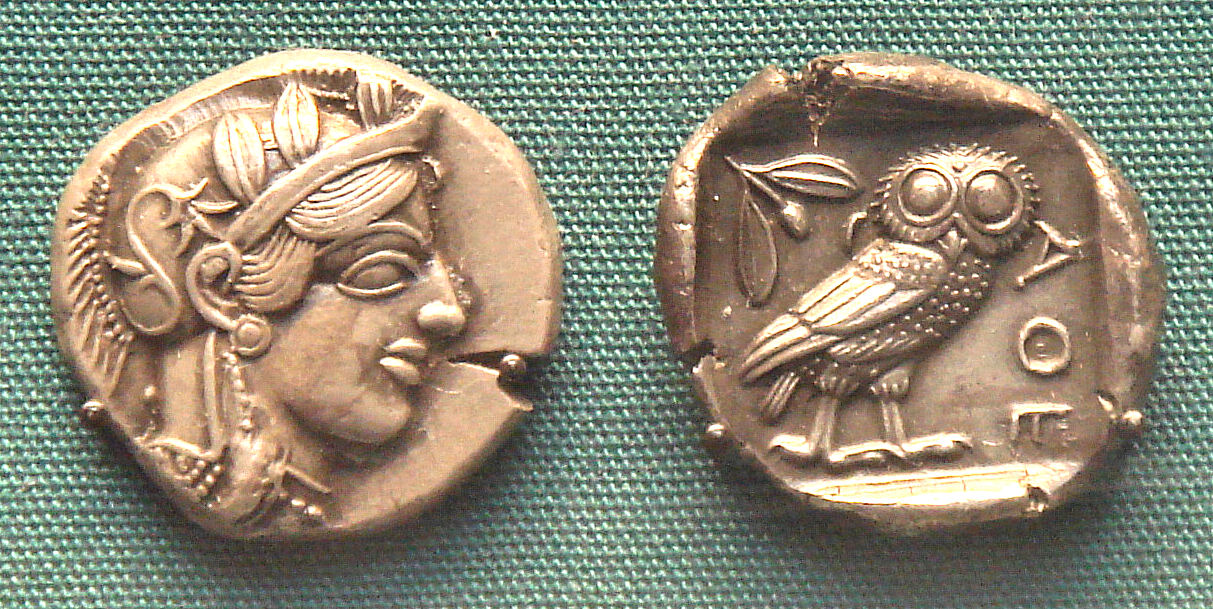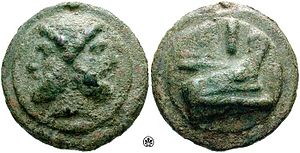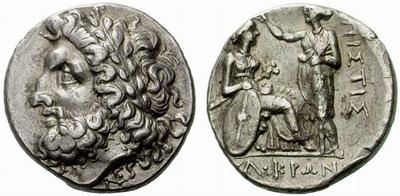1. The Romans didn't bother with currency until the 300 BC.
Yup. They somehow functioned as a city with a trading economy with no actual coinage until c. 300BC. They had encountered others with currencies: the Greeks had coinage from at least the 7th century BC, 300 years earlier. The Etrurians also had a form of currency: bronze bars of full weight that were used for trade from about the 5th century BC. This isn't a little thing: by 300BC Rome was one of the largest cities in the Mediterranean. No one knows why they didn't adopt coinage until the time, or how they managed before it. The Roman sources simply didn't know about this (all our sources are pretty much 200BC or later). They thought maybe King Numma had invented coinage as his name and the word for coins (Nummus) sounded pretty similar.
2. When they did bother with currency, they actually used two systems
Yessisr! They couldn't work out which of the above models was most convenient, so for the best part of a century they had both.
Head of Janus, left, and a ship's prow, right
A trident with snakes (?)
These were the full weight of their worth- the top one pound and the bottom five pounds. Silver and gold coinage continued to be worth (supposedly) their whole weight, but bronze later became a token coinage.
3. Once they'd settled on an economy, they spewed out thousands of images.
We're used to seeing Roman coins with loads of images: Emperors, gods, victory wreaths, animals, stuff. Your average trip to a museum would emcompass a reasonable number of different pictures. However, most modern currency sticks with the same images for a really long time. That helps us know what the coins are and how much they were worth- even more important when most people weren't literate and there wasn't a great numerical system for putting the dates or denominations on things. The same went for most place in the ancient world, such as Athens. They had an Owl and an Athena on their coins basically forever. The same Owl is on one of the Greek Euro denominations even now:

You can tell it's Athena by the helmet on top of her curls
And yet the Romans had thousands of different types- new ones almost every coin issue- and they rarely bothered to put the denomination, or even "Roma" on their coins. They just didn't need to. By the 1st century BC Roman coins were well known and recognisable to almost all in their empire.
4. They used their coins as a method of control.
Like so many other things, the Romans used their coinage as a method of control. Once they'd taken over a place, they might eventually let it strike its own coinage again, but the imagery usually became recognisably Roman. A particular example is that of Locri. The city of Locri decided to throw its lot in with the Romans after the Pyrrhus Wars, (c. 270BC). They minted the following coinage:
The head is that of Zeus, and the scene depicts Roma, seated. She is being crowned by the goddess Pistis, who symbolised good faith and loyalty.
5. They had a fixed ratio of silver and gold coin exchange, while also having free-floating bullion prices.
For about four hundred years. Economists claim this fiscal arrangement is impossible. Go figure.





















